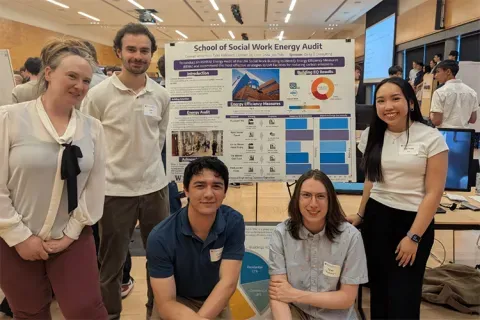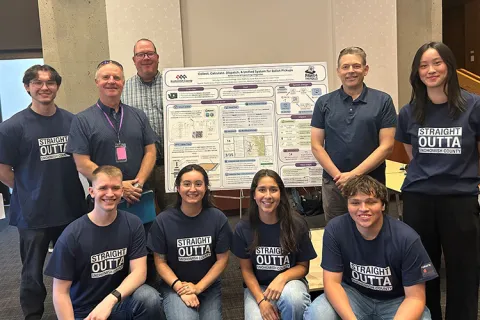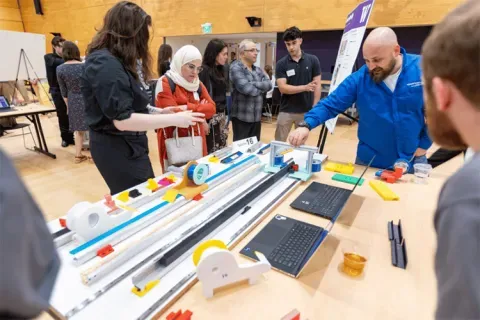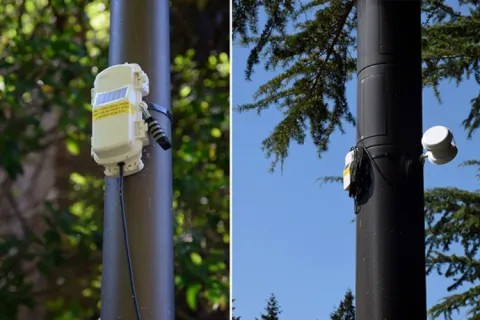T-Mobile
Adaptive Drone Flight Using Real-Time 5G RF Data
In this project, this student team will work to develop a drone system capable of dynamically adjusting its flight path and behavior based on real-time feedback from 5G network performance metrics. This student team will work to maintain optimal 5G connectivity by adapting to changing RF conditions, such as signal strength, interference, packet loss. The drone will utilize a 5G modem to gather RF data and make decisions using pre-programmed adaptive algorithms. Scope: - Utilizing our drone test platform to collect RF data for the test environment. - Developing adaptive flight algorithms that adjust the drone’s altitude, path, or behavior based on signal strength, SINR, packet loss, and latency. - Designing a simulation platform using NVIDIA Omniverse to test adaptive behaviors under various 5G conditions. - Conducting real-world flight tests to validate the system's ability to adapt in dynamic RF environments. Design Parameters: - 5G Connectivity: The drone must be equipped with a 5G modem capable of collecting real-time network performance metrics (e.g., RSRP, SINR). - Adaptive Algorithms: Develop algorithms that trigger specific behaviors (e.g., adjusting altitude, rerouting) when network conditions degrade (e.g., signal drops below a threshold). - Simulation Environment: Use NVIDIA Omniverse to create a virtual RF environment that models how different factors (e.g. interference, obstacles) affect signal strength and simulate drone responses. Performance: - Connectivity Improvement: Measure the ability of the drone to maintain a stable 5G connection under varying RF conditions. - Adaptability: Assess the speed and effectiveness of the drone’s adaptive behaviors in response to changes in signal strength or interference. - Power Efficiency: Track any increases in power consumption due to adaptive behaviors, particularly changes in altitude and path. The outcomes the student team will work to achieve include: - A functional drone capable of adapting to changes in RF conditions in real-time during flight. - A simulation model of 5G performance integrated into NVIDIA Omniverse, enabling testing of different RF scenarios without requiring constant real-world flights. - Analysis of the drone’s performance under various conditions, comparing real-world flight tests with simulation results.
Faculty Adviser(s)
Sumit Roy, Electrical & Computer Engineering
Related News

Mon, 10/13/2025 | UW Mechanical Engineering
Capstone collaboration leads to award
An ME capstone team received first place for its energy audit of the UW School of Social Work building.

Thu, 07/17/2025
UW engineering students develop smart ballot solution
UW engineering students develop smart technology solution to improve ballot collection for Snohomish County.

Mon, 07/07/2025 | UW Mechanical Engineering
Capstone creations
Students displayed innovative capstone design projects at the 2025 expo.

Fri, 09/20/2024 | UW Civil & Environmental Engineering
Smarter irrigation for a greener UW
A new project combines satellite data with ground sensors to conserve water and create a more sustainable campus environment.